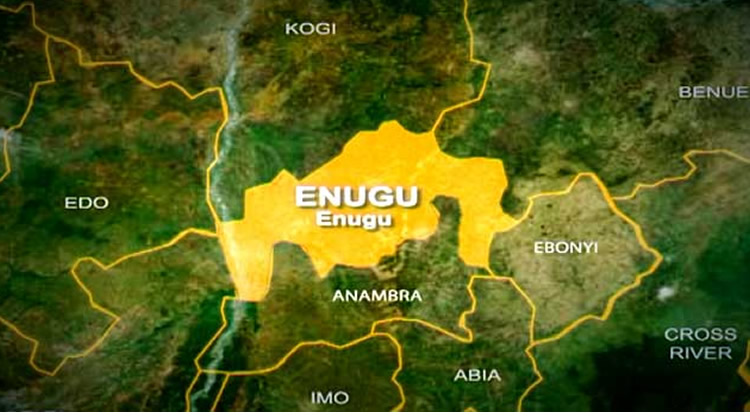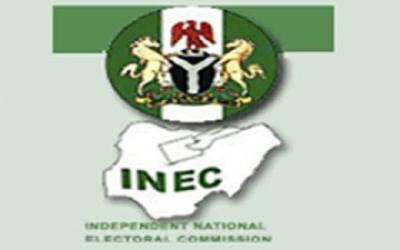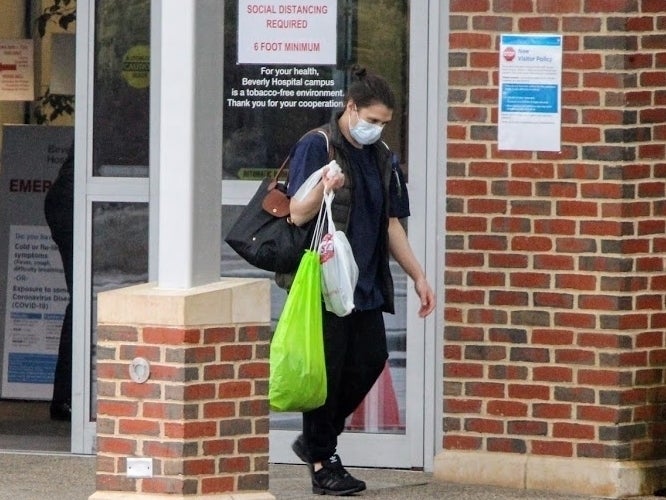On 29 May 2015, when a former House of Representatives member, Ifeanyi Ugwuanyi, stepped in as the third elected governor of Enugu State, he pledged to “bring hope, peace and development” to Enugu people.
Mr Ugwuanyi, in his first term inaugural speech, told the gathering at the popular Michael Okpara Square that he would liberate the people, particularly those in rural communities, from the “prison of poverty and under-development.”
“I recommit myself to employment generation, enhanced social services and good governance, rural development and indeed, security and justice.
“We will drive with full force investment promotion, agricultural sector renewal, provision of critical infrastructures, human capital development and skills acquisition. And these, I owe you and my God to fulfil,” he had said.
Mr Ugwuanyi was re-elected in 2019.
In his second-term inaugural speech, the governor promised to close the developmental gap between the rural and urban areas of the state. He also pledged to devote special attention to security.
“Our government shall implement creative ideas, templates, and processes that will further mobilise resources to address our development needs.
“We will improve on oversight and reforms to reduce the cost of governance in order to deliver happiness and democracy dividends to the people of Enugu State,” he had said.
On 29 May 2023, the governor will complete his second term, marking eight years in power.
PREMIUM TIMES examines data on key socio-economic indicators to identify what has changed since Mr Ugwuanyi assumed office in 2015.
Internally-Generated Revenue (IGR) And FAAC Allocation
When Mr Ugwuanyi took office as governor, the Internally Generated Revenue (IGR) of Enugu State was N18 billion in 2015. The state’s IGR ranking stood at 6th, data released by the statistics bureau, NBS, shows.
By the end of 2019, months after Mr Ugwuanyi’s first term, Enugu’s IGR had grown to N31 billion, emerging as the ninth highest in the country and the highest in the South-east.
The state raised N10.6 billion in the first six months of that year and N20.4 billion in the last six months.
Within the same year, the state received N51.98 billion from the Federation Account Allocation Committee (FAAC), taking the total revenue to N83.05 billion. The FAAC disbursement contributed 67 per cent to the state’s total revenue for that year, while the IGR contributed 33 per cent.
However, the success story did not continue in 2020 due to the outbreak of the coronavirus pandemic. The state suffered a 23.88 per cent decline in IGR from N31 billion generated in 2019 to N23.65 billion in 2020.
The state thus depended on FAAC disbursement for the year, which accounted for about 69.03 per cent of its total revenue, while IGR contributed 30.96 per cent.
When analysed per capita, Enugu State’s IGR in 2020 stood at N4,755, the 10th highest among the 36 states and the highest in the South-east region, followed closely in the region by Anambra State with N4,530.
Unfortunately, Enugu’s poor performance in IGR did not significantly improve in 2021 despite recording 12.97 per cent year-on-year growth from N23.65 billion in 2020 to N26.72 billion in 2021.
Still on IGR, the state dropped to 16th position in 2021 from its 14th position in 2020 across the nation. Again, when the state’s 2021 IGR is analysed on a per capita basis, which is N5,213, it is lower than the subnational average of 7,166.91.
From the foregoing, Enugu’s IGR grew from N18 billion in 2015 to N26.72 billion in 2021, an increase of N8.72 billion over five years under Mr Ugwuanyi.
Fiscal sustainability
A civic organisation, BudgIT, annually assesses the fiscal sustainability of Nigeria’s 36 states, using several indicators. In its various reports, it used four metrics to measure fiscal sustenance, including the ability of states to meet their operating expenses and loan repayment without having to borrow, fiscal power to borrow more given low debt burden vis-à-vis how much is generated in a year; and prioritisation of capital over recurrent expenditures.
Within the first six months of 2015, about two months after Mr Ugwuanyi assumed office as governor, Enugu State was ranked third on the fiscal sustainability index after Rivers and Lagos states.
By 2020, the state ranked ninth on the index, coming behind Rivers, Anambra, Ogun, Lagos, Kano, Ebonyi, Kaduna and Sokoto states. It dropped to 14th in 2021.
The state dropped further in 2022, ranking 16th in the index.
This indicates the state’s poor performance in fiscal sustainability index rankings between 2015 and 2022, dropping from third to 16th overall.
Debt burden
Enugu State has continued to struggle financially due to a rising debt burden. In 2015, when Mr Ugwuanyi became governor, the state’s total external debt stood at $71.83 million, while domestic debt stood at N37.55 billion, according to data released by BudgIT.
The state emerged as the 24th most indebted state nationally and second in the South-east that year.
At the end of 2019, months after Mr Ugwuanyi’s first tenure in office, the state’s debt burden rose significantly, with domestic debt of N61 billion (29th nationally) and external debt of $124 million, the highest in the South-east and sixth nationally.
By 2020, Enugu State’s external debt grew slightly to $124.2 million. Its domestic debt also grew to N68.09 billion, the data showed. Between 2016 and 2020, the state’s total debt increased by 72.14 per cent, finishing as the 20th most indebted state out of Nigeria’s 36 states in the same year.
The state remained the 20th most indebted state in the federation as of December 2021, with a total debt stock of N122.53 billion. Its debt stock climbed by 21.13 per cent from N115.30 billion in 2020 to N122.53 billion in 2021, data from BudgIT showed.
The state’s domestic debt stock, as of December 2021, grew to N69.17 billion, while its external debt jumped to $129.19 million.
The state also ranked 23rd on the debt sustainability index, as it recorded an estimated debt to Gross Domestic Product ratio of 8.44 per cent, debt-to-revenue ratio of 137.25 per cent, debt service-to-revenue ratio of 3.36, and personnel cost-to-revenue ratio of 46.14 per cent, the data further showed.
As of 31 December 2022, Enugu’s domestic debt jumped to N91.85 billion, becoming the third highest indebted state in the South-east after Abia and Imo states, according to records by Nigeria’s Debt Management Office (DMO). Within the same period, the state’s external debt stock dropped to $120.8 million, the highest in the South-east.
Thus, Enugu State’s external debt stock grew from $71.83 million in 2015 to $120.8 million in 2022, an increase of nearly 100 per cent in more than seven years under Mr Ugwuanyi. Its domestic debt also surged from N37.55 billion in 2015 to N91.85 billion in 2022, an increase of over 100 per cent, in more than seven years, under the governor.
The details above indicate an increasing debt burden in the state annually.
Unemployment rate
In 2017, two years after Mr Ugwuanyi took over, the unemployment rate in Enugu State was 20.5 per cent. It dropped to 18.7 per cent in the third quarter of 2018, data from the NBS showed.
The figure rose to 31.62 per cent in the fourth quarter of 2020, the lowest in the South-east. New unemployment statistics for states are yet to be published since 2021.
Thus, Enugu State’s unemployment rate grew from 20.5 per cent in 2017 to 31.62 per cent in 2020, an increase of 50 per cent in three years under Mr Ugwuanyi.
Poverty rate
In 2019, after Mr Ugwuanyi’s first term in office, Enugu State had a poverty headcount ratio of 58.13 per cent, the second highest in the South-east after Ebonyi. The ratio placed Enugu among the states above national average.
Released by the NBS, the report was based on data from the Nigerian Living Standards Survey. The poverty headcount ratio also called the poverty rate, is the percentage of people’s population who are multidimensionally poor.
By 2022, the poverty rate in Enugu dropped to 37.2 per cent, but the state remained the second highest in the South-east after Ebonyi, which had 41.1 per cent.
From the details above, Enugu State’s poverty rate dropped from a headcount ratio of 58.13 per cent in 2019 to 37.2 per cent in 2022, a difference of 20.93 per cent, within three years, under Mr Ugwuanyi.
Ease of Doing Business Ranking
Experts believe that a conducive business environment is central to stimulating investments in a state. Investors usually consider the business environment when making investment decisions.
Data on the Ease of Doing Business Ranking was unavailable in 2015 when Mr Ugwuanyi assumed office. However, an Ease of Doing Business ranking by the BudgIT in 2017 indicated that starting a business in Enugu would take an average of 33 days.
Although the ranking put the state ahead in the South-east, BudgIT said the state needed to improve its ease of doing business to maintain a place as a regional market leader.
In 2018, Enugu State was ranked third on subnational data on the ease of doing business, just after Abuja and Lagos State. It scored 81.70 out of 100.
The ranking was published in a report, Comparing Business Regulation for Domestic Firms in 36 States and FCT Abuja with 189 other economies. It focuses on whether an economy has the rules and processes that can lead to good outcomes for entrepreneurs and, in turn, increased economic activity.
By 2022, the state recorded a significant drop in the ranking. It was ranked 26th on subnational data on the ease of doing business, the second lowest in the South-east after Abia.
Thus, Enugu’s Ease of Doing Business Ranking dropped from third in 2018 to 26th in 2022, over 200 per cent drop from the initial position within four years under Mr Ugwuanyi.
Under-five mortality rate, access to health
Between 2016 and 2017, about two years after Mr Ugwuanyi took over office, 76.7 per cent of pregnant women in Enugu State had access to four or more antenatal care visits, according to data by the NBS.
The state emerged fourth in the South-east and the eleventh state with the highest percentage of access to antenatal care visits across Nigeria.
By 2018, the state improved with 88.1 per cent, becoming the fourth best state in access to antenatal care visits across the country, just after Osun, Ogun and Abia states. The score placed the state above the national average of 56.8 per cent for the year.
In 2021, the NBS data shows the figure improved with 95.8 per cent, becoming the second best in access to antenatal care visits nationwide.
On the Under-five Mortality, data did not show the rate for Enugu State between 2016 and 2017. But in 2018, data showed that the rate was 61 per 1,000 live births. With the figure, the state clinched the second lowest position in the South-east and seventh nationally.
By 2021, the figure slightly increased to 64 per 1,000 live births, recording the second highest position in the South-east and 13th nationally alongside Ondo, a South-west state.
On the other hand, the number of women currently married or in unions who are using or whose partner is using contraceptive methods is 22.1 per cent in Enugu State between 2016 and 2017, the third best in the South-east and eleventh nationally.
By 2018, the state improved with 30.9 per cent to emerge fourth best nationally and second in the South-east.
Thus, the percentage of pregnant women in Enugu State that had access to four or more antenatal care visits improved from 76.7 per cent between 2015 and 2016 to 95.8 per cent in 2021, a difference of 19.1 per cent within five years under Mr Ugwuanyi.
Also, the details above indicate that Enugu’s Under-five Mortality rate grew from 61 per 1,000 live births in 2018 to 64 per 1,000 live births in 2021, an increase of about three per cent under Mr Ugwuanyi.
Similarly, the number of women married or in unions who use or whose partner uses contraceptive methods in Enugu State grew from 22.1 per cent between 2016 and 2017 to 30.9 per cent in 2018, a difference of nearly 50 per cent under Mr Ugwuanyi.
Budgetary Allocation to Key Sectors – Education & Health
Education and health are two of the critical sectors that require investments to engineer the socio-economic development of every society, experts said.
The United Nations Educational Scientific and Cultural Organisation (UNESCO) recommended that governments of various countries should allocate 15 to 20 per cent of their total annual budgetary allocation to education. Similarly, heads of African Union countries, in April 2021, recommended allocating at least 15 per cent of the annual budget to the health sector.
An analysis of the Enugu State Government’s budgetary allocations to the education and health sector under Governor Ugwuanyi’s administration shows that the state has consistently failed to meet the benchmark for the two sectors.
In 2016, for instance, Enugu State allocated the sum of N3 billion to the health sector, out of a total annual budgetary allocation of N85.17 billion. The allocation was about 3.5 per cent of the total budget, which is below the benchmark for health.
In the same year, the state also budgeted N4.089 billion for education, about 4.8 per cent of the total budget, also below the benchmark for the sector.
Again, in 2018, the state committed N3.7 billion, about 2.47 per cent of its annual budget of N150.09 billion, to its health sector, data from the NBS showed.
In 2019, the state remarkably increased its health budget to 6.66 per cent with N7.27 billion out of a total budget of N109.10 billion. But it still failed to reach the continental benchmark.
PREMIUM TIMES






